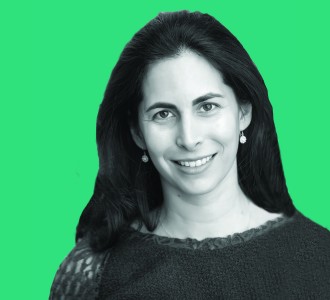Trending
(Guided) flight to the suburbs: Q&A, Part II

From the August issue: Summer is traditionally moving time. For many New Yorkers, particularly families, that means leaving the city entirely. Nationwide, people aged 30 to 44 are moving to the suburbs at a faster clip than in the 1990s, according to the data analysis website FiveThirtyEight. And the New York Times recently reported that bidding wars were taking place across Westchester, northern New Jersey, parts of Long Island and lower Fairfield County, Connecticut, mostly in the under $2 million market. Unlike previous decades, the reasons to leave the city are no longer crime and blight. Instead, brokers say that many are so-called “reluctant defectors” who have been priced out of the city. NYC-based brokers are now providing seminars that give buyers a lay of the land — as well as a little hand-holding.
For the second web installment, we turn to Christopher Capece of AvalonBay Communities and Jessica Fields of Compass.

Christopher Capece
Christopher Capece
Senior director of development, AvalonBay Communities
AvalonBay is one of the largest rental housing developers in the country. What kind of projects are you spearheading in the suburbs now and how are those projects leasing up?
Rockville Centre on Long Island is a good example of this trend [toward urbanizing downtowns]. In 2011, we completed Avalon Rockville Centre with 349 units, and we have recently started Phase II with 165 units. The community is within easy walking distance to the train station and downtown Rockville Centre. The commute to Manhattan is just over 30 minutes, and downtown Rockville Centre has become a major destination with vibrant evening activities and shopping. Almost a third of the new units in Phase II are studio apartments that meet the needs of young Long Island professionals. Phase I is fully occupied, and we expect a strong lease-up for Phase II.
What is the market like for new development in the suburbs, and how has that changed over the last few years? Are you seeing opportunities to build in these areas, especially as NYC is becoming financially harder to develop in?
It’s challenging to build on Long Island and other NYC submarkets where there are very high barriers to entry. Not all developers can handle the inevitable difficulties of building in these submarkets. But the high quality of AvalonBay’s communities, our track record and our luxury amenities all combine to give us a major advantage. We’re seeing opportunities for companies like ours that have a successful track record, financial staying power and experience working with communities and local stakeholders.
How big an issue is NIMBYism in these markets compared to NYC?
NIMBYism can be a bigger and more challenging issue in the suburbs than in NYC. On Long Island, for example, less than 1 percent of land is zoned for multifamily, so we generally need to get properties rezoned in order to build, a challenge that developers don’t generally confront in NYC.

Jessica Fields
Jessica Fields
Broker, Compass
You’re a Park Slope resident who created a real estate seminar called “Beyond Brooklyn.” How did you get the idea?
My partner Alexandra Foucard and I created an event called “Beyond Brooklyn” because when talking to clients we were finding that a lot of people were struggling with where to move. They love the sense of community we have here in Brooklyn, but lack of space is getting to a lot of people, especially people with kids who dream of having a backyard or someplace for their kids to go outside and play and more space inside their house.
Moving to the suburbs is not a new thing once you start having a family. What is unusual is that we found people didn’t know where to move. They didn’t have a connection to any particular location. If you have young children and don’t know your way around, it’s very hard to go explore Westchester County or New Jersey in order to understand how this town is different from another. So we brought in real estate agents from outside the city to present information about their communities.
What are the biggest concerns or fears city buyers have about the suburbs?
The big concern is loss of walkability. And we address that by noting that many of these suburban towns are incredibly walkable. Another big concern is lack of culture. Concerts. Book readings. Lastly, people are seeking diversity. There is a concern that everyone in X suburban town will look the same, sound the same. It’s the stereotype portrayed in movies like “The Stepford Wives” and “The Truman Show.” But what you find when you take a really big pool of ex-Manhattanites and ex-Brooklynites for whom these concerns are very important is that they recreate those missing elements in the community to which they move. They open up restaurants and create venues that host cultural events.
Which suburban areas are NYC buyers gravitating toward most? Are there any up-and-coming towns that have started attracting city buyers? Where are you seeing the least interest?
For a long time, Maplewood, South Orange and Montclair in New Jersey were called the Park Slope of New Jersey. Now, you can add Glen Ridge, another town over, to this list of destinations for people who choose to leave urban life. Westchester as a whole, and the Hudson River towns in Westchester, like Dobbs Ferry, Hastings-on-Hudson and Tarrytown, are popular with our clients from brownstone Brooklyn. In the Hudson River towns, the desirability is incredible. Every property is going into a bidding war and has multiple offers. It’s the same dynamic as we’ve seen in Brooklyn.
However, we found that Connecticut and Long island are just not as popular as destinations.
Who’s your typical client and what are the biggest challenges to selling in suburbia?
When I think about the typical client, it’s a couple who have been priced out of brownstone Brooklyn, who have one or two children, are selling in Brooklyn for about $1 million and looking to buy in the suburbs for $800,000, to budget for higher property taxes, a car and commuting costs.
The challenge is to value what they’re selling accurately. These days, it’s hard for clients to know what they have to spend. Moreover, because the market in these Westchester towns is so competitive, we advise people to have the cash from their sale in Brooklyn in order to be a competitive buyer. It’s better to avoid the contingency that they need to sell before they can buy. They [can expect to] go through a few rounds of offers that don’t get accepted. Another challenge is the learning curve of the New York City buyer. Agents expect their potential buyers to need three months of education, meaning driving around with their clients looking at properties they will never buy. The clients need to learn the geography: how does the location relate to conveniences, the train, the subway.
How are luxury properties in these suburban towns performing compared to the rest of the market? Are prices softening?
I don’t know that anyone can ever predict these things. There’s a lot of people being priced out of Brooklyn and looking outside the city, so prices are on the rise. But the markets that we advise on aren’t directly connected to the luxury housing market.




